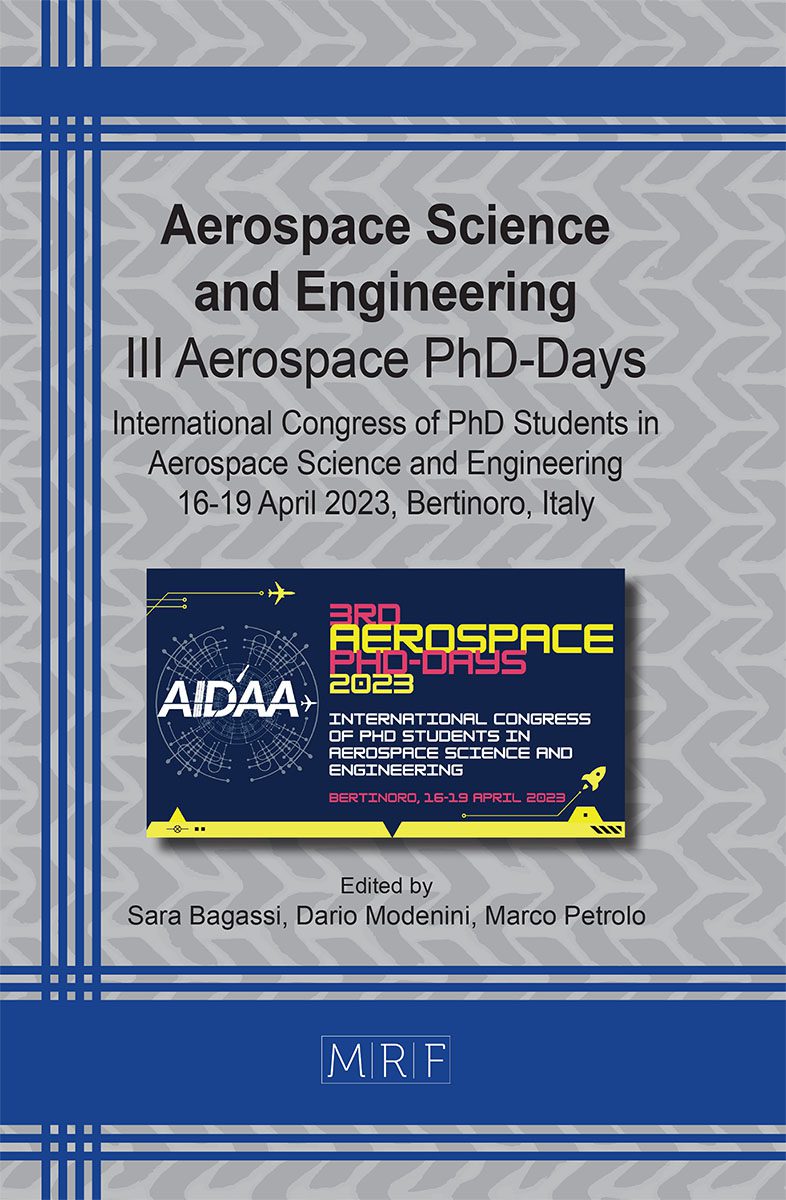A metamodel based on basis spline hyper-surfaces for thermal simulation of the wire arc additive manufacturing process
Mathilde Zani, Enrico Panettieri, Marco Montemurro
download PDFAbstract. Wire arc additive manufacturing an additive manufacturing process that allows producing large metal parts in a layer-by-layer fashion assuring a high deposition rate. However, the set of parameters that control the process leads to phenomena that are difficult to understand and predict. The work of this paper is to propose a metamodel based on basis spline entities to approximate the thermal response of the WAAM process for different combinations of deposition parameters. The aim is to reduce the computational cost, and obtain results without actually solve a complete FE model for any combination of parameters in the design space.
Keywords
Additive Manufacturing, Metamodel, Industry 4.0, Numerical Simulation
Published online 9/1/2023, 7 pages
Copyright © 2023 by the author(s)
Published under license by Materials Research Forum LLC., Millersville PA, USA
Citation: Mathilde Zani, Enrico Panettieri, Marco Montemurro, A metamodel based on basis spline hyper-surfaces for thermal simulation of the wire arc additive manufacturing process, Materials Research Proceedings, Vol. 33, pp 156-162, 2023
DOI: https://doi.org/10.21741/9781644902677-23
The article was published as article 23 of the book Aerospace Science and Engineering
![]() Content from this work may be used under the terms of the Creative Commons Attribution 3.0 license. Any further distribution of this work must maintain attribution to the author(s) and the title of the work, journal citation and DOI.
Content from this work may be used under the terms of the Creative Commons Attribution 3.0 license. Any further distribution of this work must maintain attribution to the author(s) and the title of the work, journal citation and DOI.
References
[1] Lockett, Helen; Ding, Jialuo; Williams, Stewart and Martina, Filomeno (2017). Design for Wire + Arc Additive Manufacture: design rules and build orientation selection. Journal of Engineering Design, 28(7-9) pp. 568–598, https://doi.org/10.1080/09544828.2017.1365826
[2] Ding, D., Pan, Z., Cuiuri, D. and Li, H. (2015), “Wire-feed additive manufacturing of metal components: technologies, developments and future interests”, The International Journal of Advanced Manufacturing Technology, Vol. 81, pp. 465–481, https://doi.org/10.1007/s00170-015-7077-3.
[3] Chergui, M.A. (2021), Simulation Based deposition Strategies Evaluation and Optimization in Wire Arc Additive Manufacturing, Theses, Université Grenoble Alpes. URL: https://tel.archives-ouvertes.fr/tel-03273221
[4] Wu, B., Pan, Z., Ding, D., Cuiuri, D., Li, H., Xu, J. and Norrish, J. (2018), “A review of the wire arc additive manufacturing of metals: properties, defects and quality improvement”, Journal of Manufacturing Processes, Vol. 35, pp. 127–139, https://doi.org/10.1016/j.jmapro.2018.08.001
[5] Ding, J., Colegrove, P., Mehnen, J., Ganguly, S., Sequeira Almeida, P., Wang, F. and Williams, S. (2011), “Thermo-mechanical analysis of wire and arc additive layer manufacturing process on large multi-layer parts”, Computational Materials Science, Vol. 50 No. 12, pp. 3315–3322, https://doi.org/10.1016/j.commatsci.2011.06.023
[6] Montevecchi, F., Venturini, G., Grossi, N., Scippa, A. and Campatelli, G. (2017), “Finite element mesh coarsening for effective distortion prediction in wire arc additive manufacturing”, Additive Manufacturing, Vol. 18, pp. 145–155, https://doi.org/10.1016/j.addma.2017.10.010.
[7] Montevecchi, F., Venturini, G., Grossi, N., Scippa, A. and Campatelli, G. (2017), “Finite element mesh coarsening for effective distortion prediction in wire arc additive manufacturing”, Additive Manufacturing, Vol. 18, pp. 145–155, https://doi.org/10.1016/j.addma.2017.10.010.
[8] Wang, L., Chen, X., Kang, S., Deng, X. and Jin, R. (2020), “Meta-modeling of high-fidelity fea simulation for efficient product and process design in additive manufacturing”, Additive Manufacturing, Vol. 35, p. 101211, https://doi.org/10.1016/j.addma.2020.101211.
[9] Audoux, Y., Montemurro, M. and Pailhès, J. (2020b), “Non-uniform rational basis spline hyper-surfaces for metamodelling”, Computer Methods in Applied Mechanics and Engineering, Vol. 364, p. 112918, https://doi.org/10.1016/j.cma.2020.112918.
[10] Baillargeon, S. (2005), “Le krigeage: revue de la théorie et application à l’interpolation spatiale de données de précipitations”, https://hdl.handle.net/20.500.11794/18036
[11] Goldak, J., Chakravarti, A. and Bibby, M. (1984), “A new finite element model for welding heat sources”, Metallurgical transactions B, Vol. 15 No. 2, pp. 299–305, https://doi.org/10.1007/BF02667333.
[12] Smith, M. (2020), “Abaqus/standard user’s manual, version 6.20”
[13] Song, X., Feih, S., Zhai,W., Sun, C.N., Li, F., Maiti, R.,Wei, J., Yang, Y., Oancea, V., Brandt, L.R. et al. (2020), “Advances in additive manufacturing process simulation: Residual stresses and distortion predictions in complex metallic components”, Materials & Design, Vol. 193, p. 108779, https://doi.org/10.1016/j.matdes.2020.108779
[14] Michaleris, P., DeBiccari, A. et al. (1997), “Prediction of welding distortion”, Welding Journal- Including Welding Research Supplement, Vol. 76 No. 4, p. 172s, https://www.osti.gov/biblio/477340
[15] Cambon, C. (2021), Étude thermomécanique du procédé de fabrication métallique arc-fil : approche numérique et expérimentale, Theses, Université Montpellier.URL: https://tel.archives-ouvertes.fr/tel-03396711
[16] Piegl, L. and Tiller, W. (1996), The NURBS book, Springer Science & Business Media, https://doi.org/10.1007/978-3-642-97385-7














